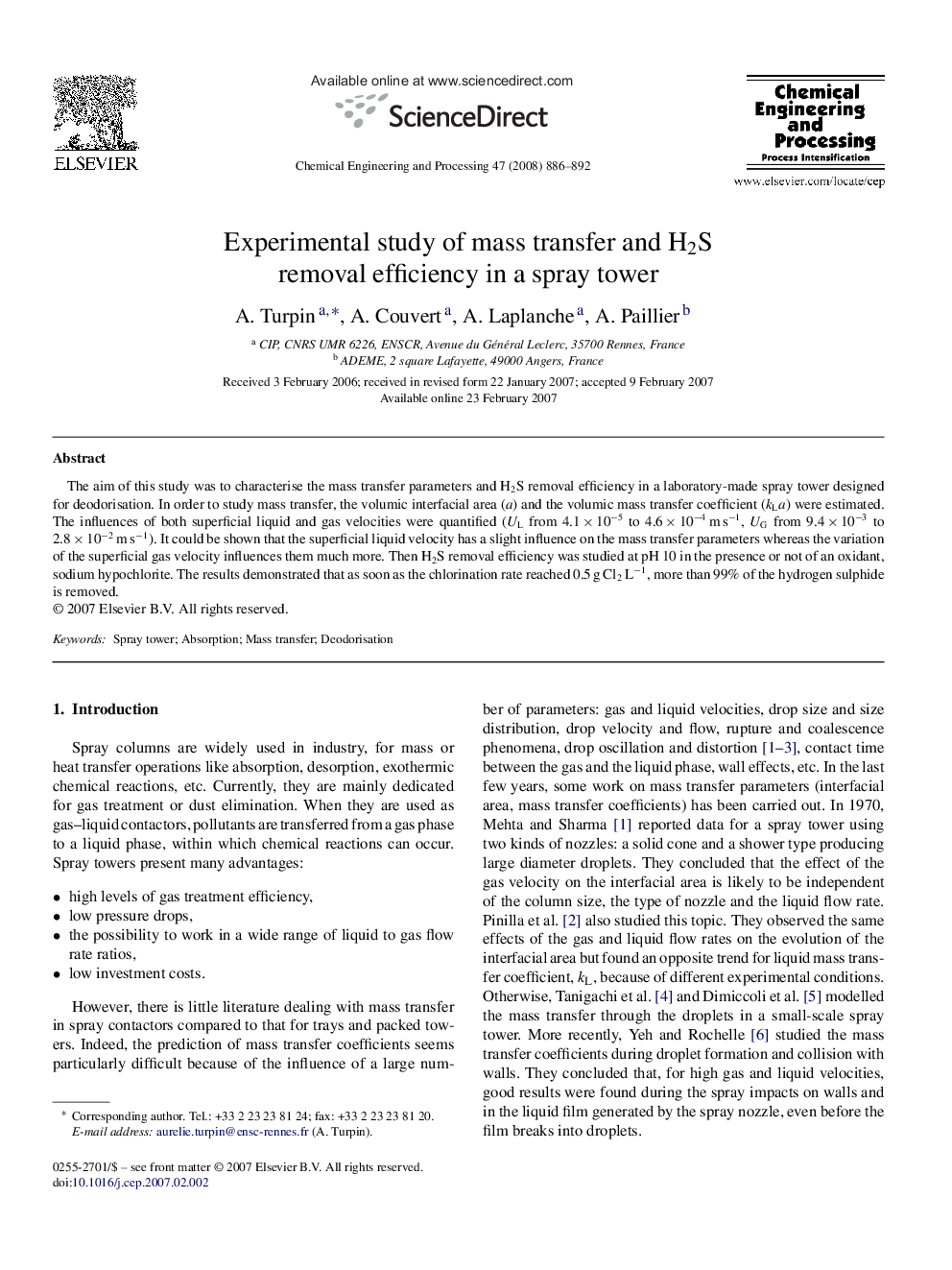| Article ID | Journal | Published Year | Pages | File Type |
|---|---|---|---|---|
| 687503 | Chemical Engineering and Processing: Process Intensification | 2008 | 7 Pages |
The aim of this study was to characterise the mass transfer parameters and H2S removal efficiency in a laboratory-made spray tower designed for deodorisation. In order to study mass transfer, the volumic interfacial area (a) and the volumic mass transfer coefficient (kLa) were estimated. The influences of both superficial liquid and gas velocities were quantified (UL from 4.1 × 10−5 to 4.6 × 10−4 m s−1, UG from 9.4 × 10−3 to 2.8 × 10−2 m s−1). It could be shown that the superficial liquid velocity has a slight influence on the mass transfer parameters whereas the variation of the superficial gas velocity influences them much more. Then H2S removal efficiency was studied at pH 10 in the presence or not of an oxidant, sodium hypochlorite. The results demonstrated that as soon as the chlorination rate reached 0.5 g Cl2 L−1, more than 99% of the hydrogen sulphide is removed.
